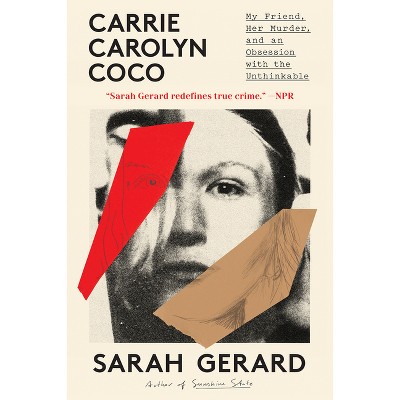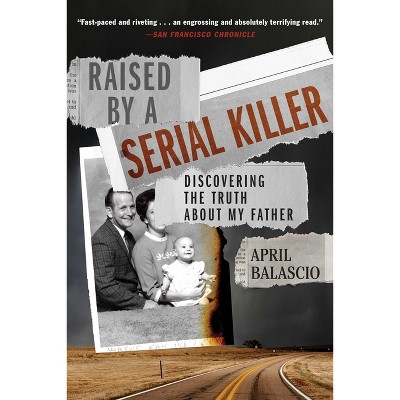Sponsored

The Potato Masher Murder - by Sosniecki (Paperback)
In Stock
Sponsored
About this item
Highlights
- About the Author: Retired journalist Gary Sosniecki worked at newspapers in four states during his 43-year career.
- 250 Pages
- True Crime, Historical
Description
About the Book
"Discord and domestic violence end in murder Albin Ludwig was furious. He had caught his wife, Cecilia, with other men before; now, after secretly following Cecilia one evening in 1906, Albin was overcome with suspicion. Albin and Cecilia quarreled that night and again the next day. Prosecutors later claimed that the final quarrel ended when Albin knocked Cecilia unconscious with a wooden potato masher, doused her with a flammable liquid, lit her on fire, and left her to burn to death. Albin claimed self-defense, but he was convicted of second-degree murder. Newspaper coverage of the dramatic crime and trial was jarringly explicit and detailed, shocking readers in Indiana, where the crime occurred. Peter Young of the South Bend Times wrote that the murder's "horrors and its shocking features . . . have never before been witnessed in Mishawaka." The story was front-page news throughout northern Indiana for much of a year. For several generations, the families of both Cecilia and Albin would be silent about the crime-until Cecilia's great-grandson, award-winning journalist Gary Sosniecki, uncovered the family's dark secret. As he discovered, wife beating was commonplace in the early 20th century (before the gender-neutral term of "domestic violence" was adopted), and "wife murder" was so common that newspapers described virtually every case by that term. At long last, The Potato Masher Murder: Death at the Hands of a Jealous Husband unearths the full story of two immigrant families united by love and torn apart by domestic violence"--From the Back Cover
Albin Ludwig was furious. He had caught his wife, Cecilia, with other men before; now, after secretly following Cecilia one evening in 1906, Albin was overcome with suspicion. Albin and Cecilia quarreled that night and again the next day. Prosecutors later claimed that the final quarrel ended when Albin knocked Cecilia unconscious with a wooden potato masher, doused her with a flammable liquid, lit her on fire, and left her to burn to death. Albin claimed self-defense, but he was convicted of second-degree murder.
Newspaper coverage of the dramatic crime and trial was jarringly explicit and detailed, shocking readers in Indiana, where the crime occurred. Peter Young of the South Bend Times wrote that the murder's "horrors and its shocking features . . . have never before been witnessed in Mishawaka." The story was front-page news throughout northern Indiana for much of a year.
For several generations, the families of both Cecilia and Albin would be silent about the crime--until Cecilia's great-grandson, award-winning journalist Gary Sosniecki, uncovered the family's dark secret. As he discovered, wife beating was commonplace in the early 20th century (before the gender-neutral term of "domestic violence" was adopted), and "wife murder" was so common that newspapers described virtually every case by that term. At long last, The Potato Masher Murder: Death at the Hands of a Jealous Husband unearths the full story of two immigrant families united by love and torn apart by domestic violence.
Review Quotes
"Decades after the fact, it's disturbing to discover that a member of your family was murdered. It's even more shocking to discover that another family member was responsible for that violent death. This scenario actually happened to Gary Sosniecki, a journalist who discovered that in 1906, his great-grandmother Cecilia was beaten by her husband with the titular weapon, and then set on fire. The perpetrator, Albin Ludwig, asserted that his actions were due to self-defense. .... Sosniecki does an admirable job of explaining Indiana's attitudes towards "wife murder" and other forms of violence during this era, providing a critical but not strident assessment of the era. The events are well-told, the pacing is solid, and the trial and its aftermath are told smoothly and effectively." --The Strand
"Gary Sosniecki delivers an intriguing true crime book that is close to his heart--the murder of his great-grandmother. Putting aside his personal connection, Sosniecki shows the ramifications of the murder in the context of the era. Family secrets, domestic abuse, and toxic jealousy are issues that continue to haunt society." --Oline Cogdill, national award-winning book critic and recipient of the 2013 Raven Award from the Mystery Writers of America
"Exposing the long-buried secrets of his great-grandmother's brutal murder, Gary Sosniecki has written a fascinating and compelling account of obsession, vulnerability, and long-ago societal norms that ignored domestic violence often with deadly results. A must read for true crime lovers." --Jane Simon Ammeson, author of A Jazz Age Murder in Northwest Indiana: The Tragic Betrayal of Nettie Diamond
"Anyone interested in the investigative methods and court proceedings of an earlier period should find this book fascinating. Sosniecki often pauses in his narrative to comment on an aspect of the case that would shock anyone familiar with modern-day investigative techniques." --James Jessen Badal, author of Hell's Wasteland: The Pennsylvania Torso Murders
About the Author
Retired journalist Gary Sosniecki worked at newspapers in four states during his 43-year career. He has received dozens of awards for journalism excellence from state, national, and international newspaper organizations, including the Eugene Cervi lifetime achievement award from the International Society of Weekly Newspaper Editors. Gary was inducted into the Missouri Press Association Hall of Fame in 2014.Shipping details
Return details
Trending Non-Fiction











